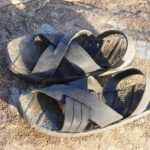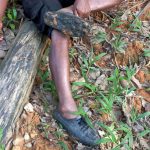As the topic of jungle footwear is quite an extensive one, it was split up into three articles. The first part covered general requirements, including going barefoot and wearing sandals. The second part covered shoes, including barefoot shoes, rubber shoes, and trail-running sneakers. And this third part will concentrate on jungle boots, gumboots, and leech-proof and waterproof socks.
Jungle boots
Dedicated jungle boots are different from conventional hiking boots. They have seepage holes along both sides, and a softer rubber sole for good traction and grip in water. There is also no waterproof liner inside the boot, preventing the bathtub effect. One example is this one here.
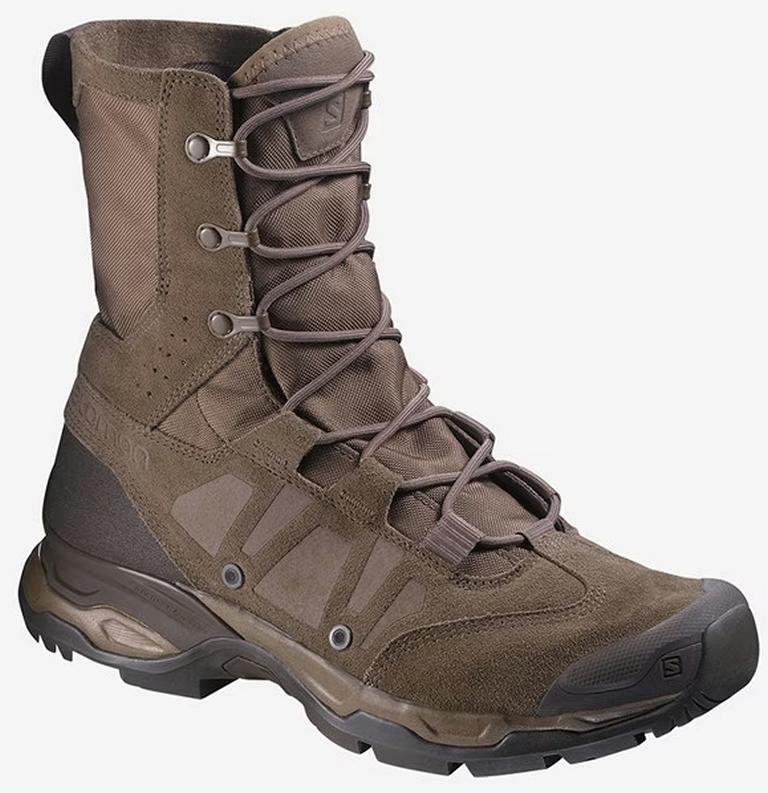
Such dedicated jungle boots are the non-plus ultra for governmental issue, where ankle protection and protection against perceived and imagined threats (e.g., snakes) are key concerns. Local civilians are unable to afford them, and even if they could, they would not purchase them. This is because of some disadvantages that are not reported in the advertisement brochures.
One reason is the time-consuming process of putting them on and taking them off. This is highly uncomfortable when entering or leaving a hut. Because in Southeast Asia, it is a deeply-rooted custom not to enter a living space with shoes on. Another reason is that these boots can be hot inside due to their high shaft and padding, which can cause increased sweating within the boot. Which in turn promotes jungle foot. And the nooks and wrinkles of the long, laced thong are a favorite hiding place for leeches, which will find a way into the boot. There, they will never be found in time, as it is too uncomfortable to take the shoes off and on regularly.
Jungle boots, therefore, get a neutral rating from me. They have advantages, but their drawbacks balance these. I wouldn’t use them because they take up too much space during air travel, are difficult to remove and reapply, tend to stay wet, and provide only minimal protection against leeches. Another important reason not to use them is that they require regular, careful foot care, more so than other jungle footwear.
Gumboots
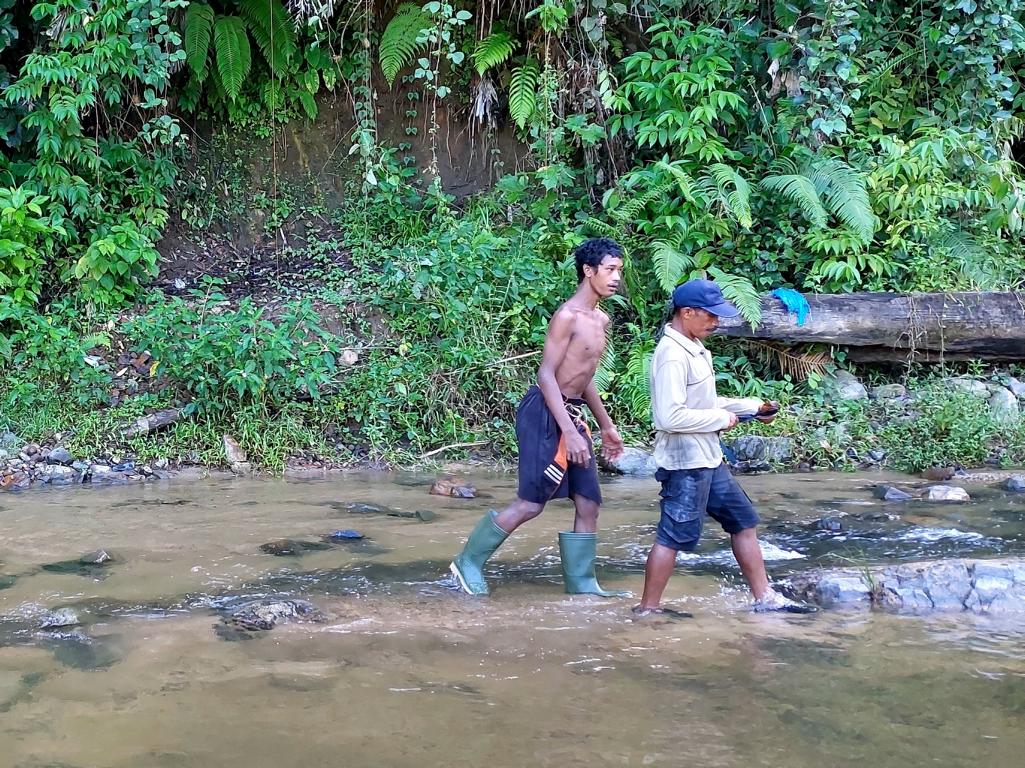
Besides using bare feet, plastic slippers, or rubber shoes, local farmers, policemen, and forest workers wear gumboots as jungle footwear. Slipping in and out is fast and easy; they offer superb grip and traction on slippery soil and rocks, are waterproof, and keep leeches at bay. They are also affordable and comfortable to wear, even without socks.
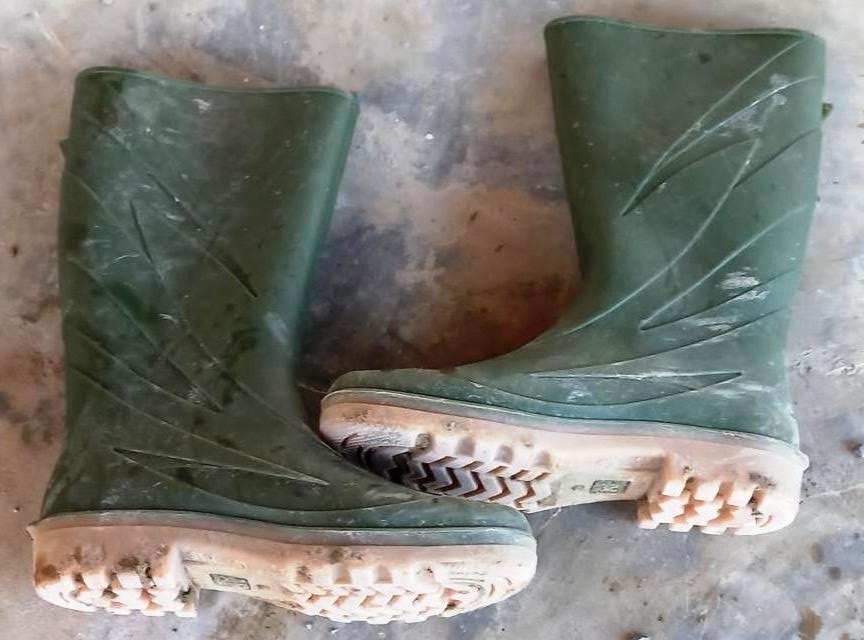
Their disadvantage is that they heavily promote sweating. Locals, therefore, only wear them for a short time and remove them whenever possible to dry their feet. In areas heavily infested with leeches, they spray the outside with a water & fertilizer (Urea) liquid to further prevent leeches from crawling up.
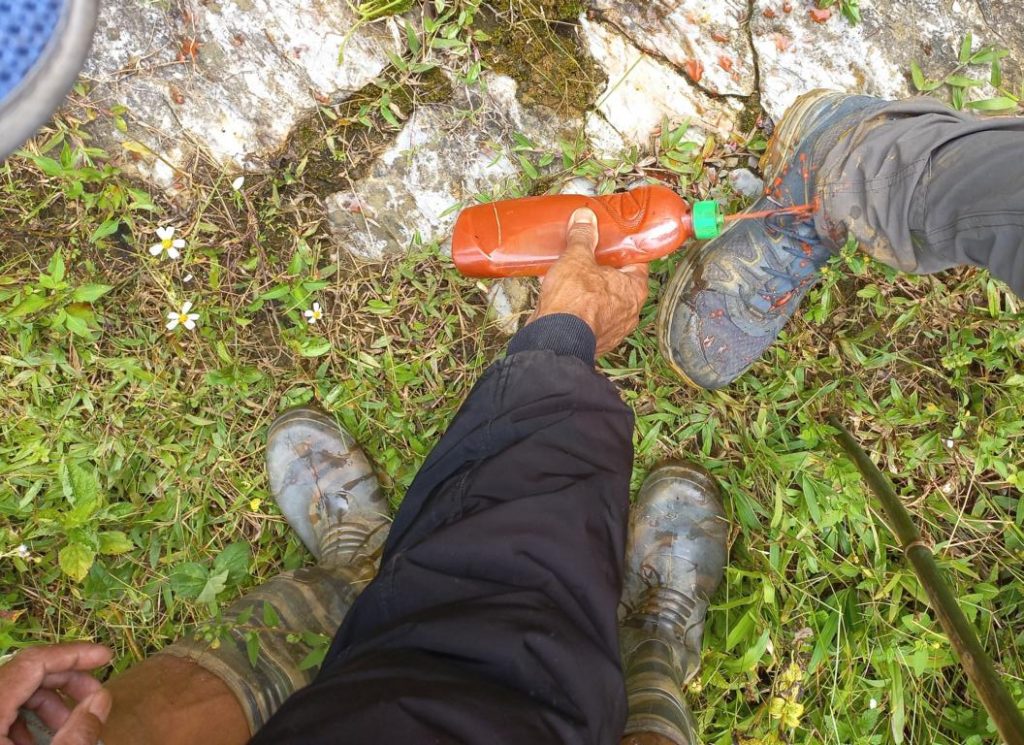
In most South-Asian countries, gumboots are only available on the markets up to size EU men’s 42 (UK: 8; US: 9). Larger sizes have to be taken from abroad, which is uncomfortable, due to their bulkiness for air travel.
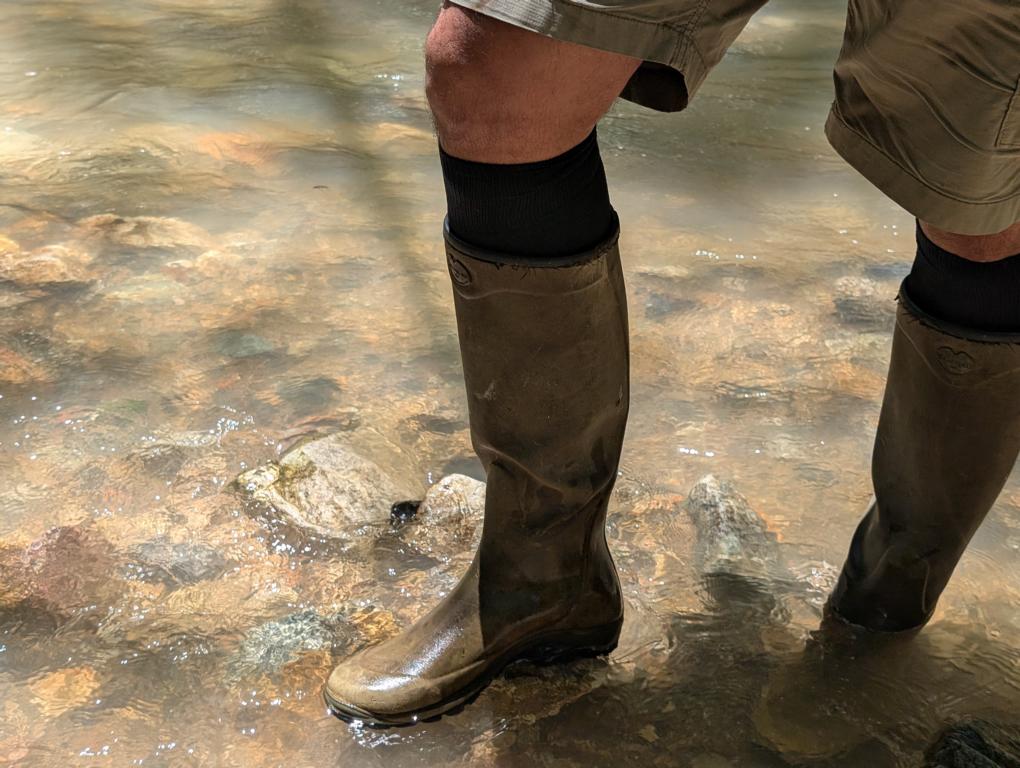
I am convinced, however, that the best jungle footwear for Southeast-Asian conditions are gumboots, worn in combination with long socks (to avoid rubbing wounds) and shorts, so that an area of bare skin can remain for checking on leeches.
Generally, I like gumboots as jungle footwear a lot, and would even call them my favorite, if it weren’t necessary to import them in most Southeast-Asian countries for my foot size.
Leech-proof socks
Leech-proof socks are not jungle footwear per se, but complement the footwear in areas heavily infested by these suckers. In combination with shoes or sneakers, a lightweight yet highly functional combination can be designed.
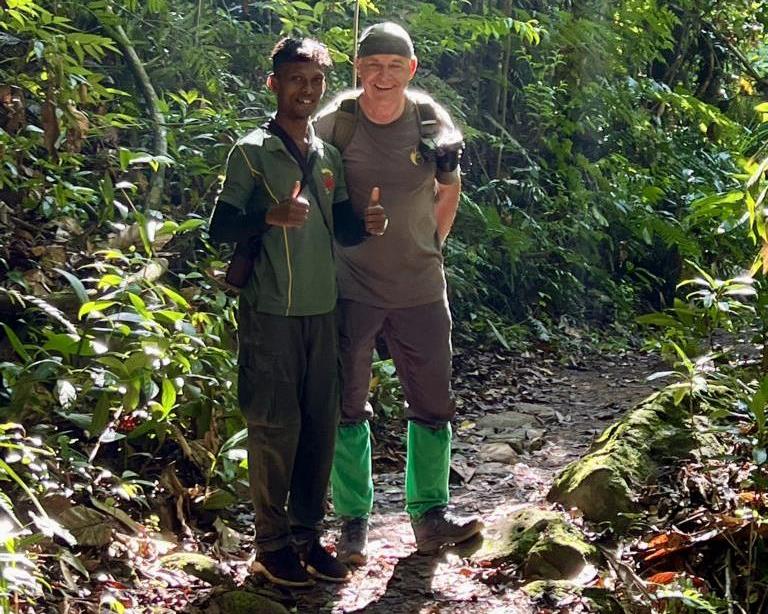
They are long stockings, made of densely woven cotton, and fitted with two strings for size adaptation and fixation. The only opening is from above.
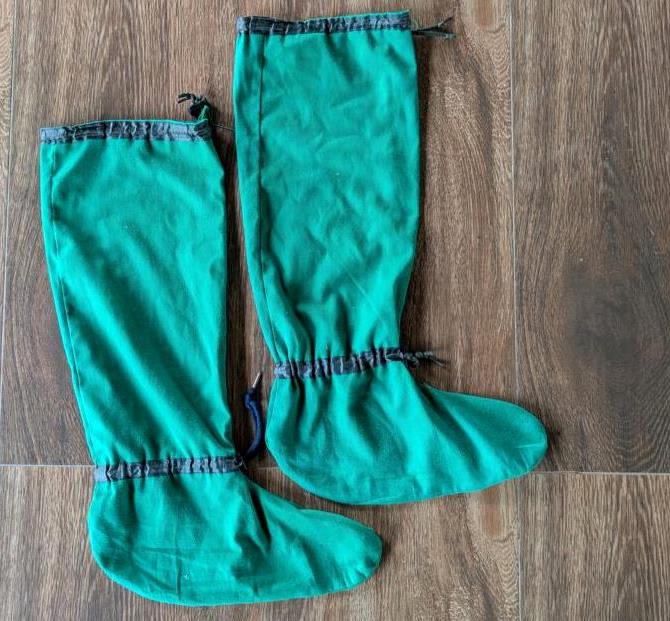
They are often made from bright colors to make the dark brown or black-colored leeches better visible. Leech-proof socks are baggy in their design, so that they can be worn over hiking socks and pants. This is a disadvantage, as often the fabric wrinkles and causes blisters on the foot. Shoes or boots are worn over these leech-proof socks.
Waterproof socks
Waterproof socks are a recent development, which adds one more facet to the spectrum of jungle footwear. As the name implies, they keep water from the skin by sporting a waterproof membrane between two layers of textiles. This gives quite thick socks, which warm up the feet in an already hot and humid climate. And they keep the sweat in, open water out, and fit tightly around the feet.
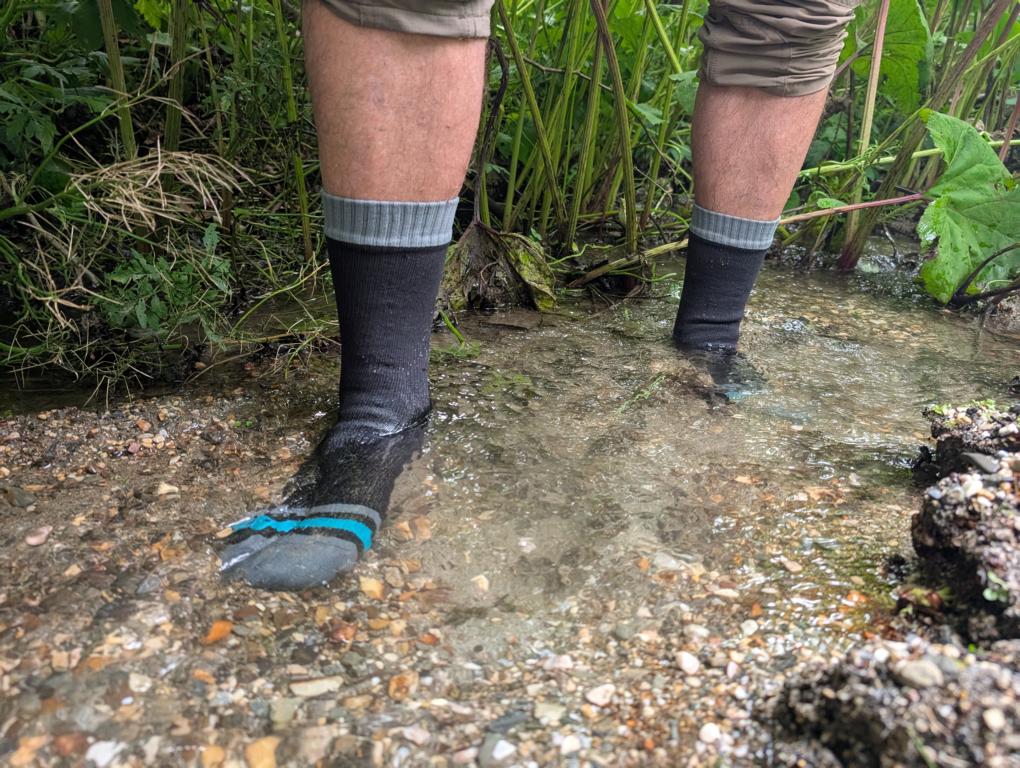
I would hesitate to use them if there weren’t one significant advantage: they are leech-proof. My favorite are waterproof socks with a nine-inch high shaft, which protect the most vulnerable area of the skin below the inside ankle bone (Medial malleolus). This shaft size is long enough to visually spot most of the leeches trying to find their way up to the tougher skin. The sock cuff can also be made further leech-proof by just sticking one or two cigarettes horizontally into the cuffs or smear a tabacco-water mixture around.
Practical results of waterproof socks and trial-running shoes
After testing the combination of waterproof socks and trial running shoes under difficult conditions in Malaysian rainforests, I found the following results:
- Grip and traction: Superb, due to the deep profile of trial-running shoes. The sole material is soft enough for an excellent grip on wet rocks, and is even better than of most rubber boots. Lifetime if these soles, however, has still to be proven.
- Protection against leeches: Excellent. On regular checking, leeches crawling up the socks can be easily seen and removed. When back in camp, leeches were found within the shoes. They were not able to reach the skin.
- Waterproofness of the socks: After the first day slogging in very difficult terrain (steep, very slippery, muddy and wet), on the second day the socks were not waterproof any more. Most probably the membrane between the two textile layers was torn somewhere.
- Foot condition at the end of the day: Bad. The skin covered by the waterproof socks puffed up, was white and all non-living parts of the skin (like callusses) were starting to get rubbed off. This condition was far from ideal.
- Others: An unexpected experience was, that seeds from grassy areas along the streams stuck to the fabric of the socks, which was a real hazzle.
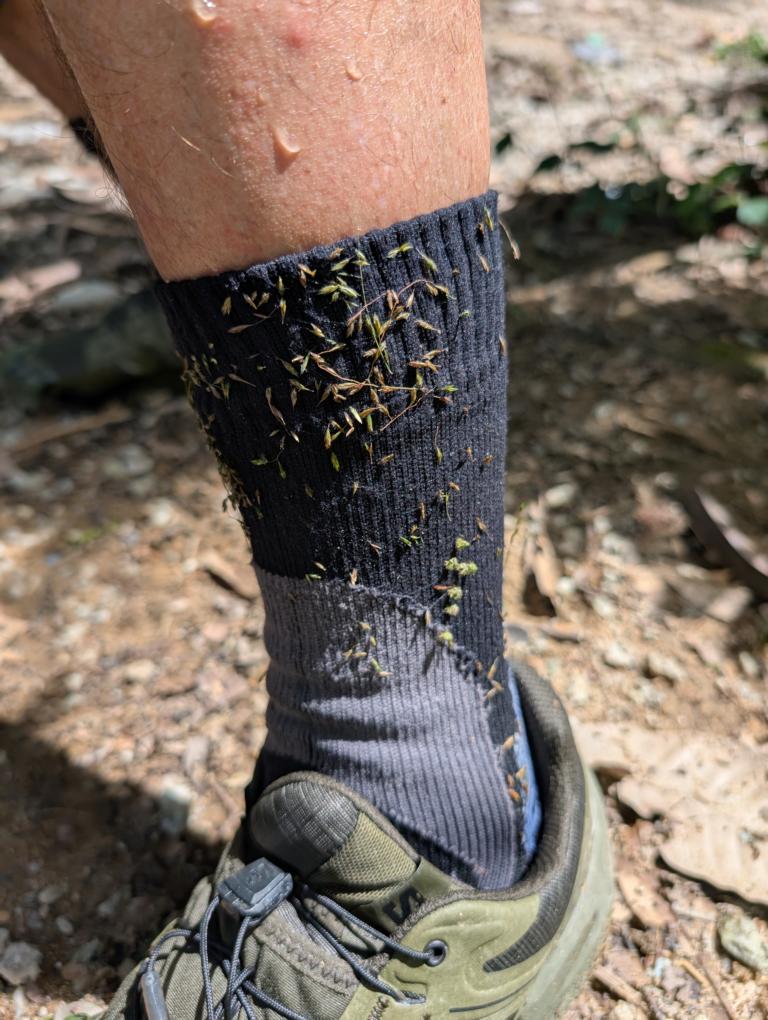
Summary of jungle footwear
It is nearly impossible to recommend an ideal jungle footwear, as the requirements, affordability, and availability differ significantly for various users. If I were:
* Remotely living hunter-gatherer, I would walk barefoot and use plastic slippers if increased foot protection were needed.
* Local farmer, fisherman, hunter, boatsman, or similar, I would either use rubber shoes or gumboots in the forests.
* Foreign military person, geared up by a government for intervention, I would use dedicated jungle boots in combination with waterproof socks.
* On first sight, the use of trail-running sneakers in combination with either leech-proof or water-proof socks seems to be ideal. They do not add additional weight or space in the luggage when travelling by air. Practical experience, however, showed that they are only suited for non-demanding rainforest applications.
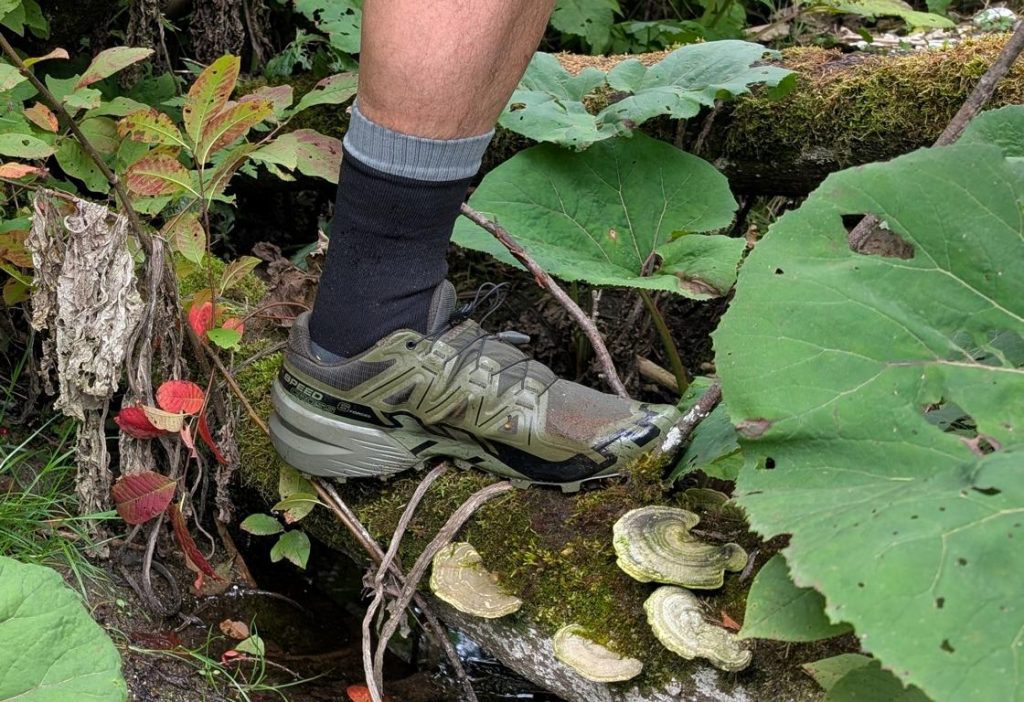
* The best combination of jungle footwear for bushcrafters and such are in my – subjective – opinion gumboots in combination with long stockings.
Lessons learned about jungle footwear for Southeast Asia, Part 3:
- Jungle boots are a high-end solution for specific applications, which have drawbacks, making them unsuitable for the local population.
- Gumboots are the jungle boots of the locals. In combination with long, tightly wooven socks, they are the best compromise for jungle rambling.
- Wearing leech-proof socks is a must in many areas, but their wrinkles in the fabric sometimes make them uncomfortable to wear.
- Waterproof socks are a kind of replacement for leech-proof socks and can be used in combination with trial-running shoes for lighter applications.
DISCLAIMER
All products mentioned in this article are solely presented as examples to illustrate functionality, without any brand endorsement, and the author receives no remuneration or benefits at all for their inclusion.
.



